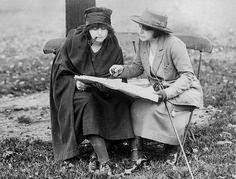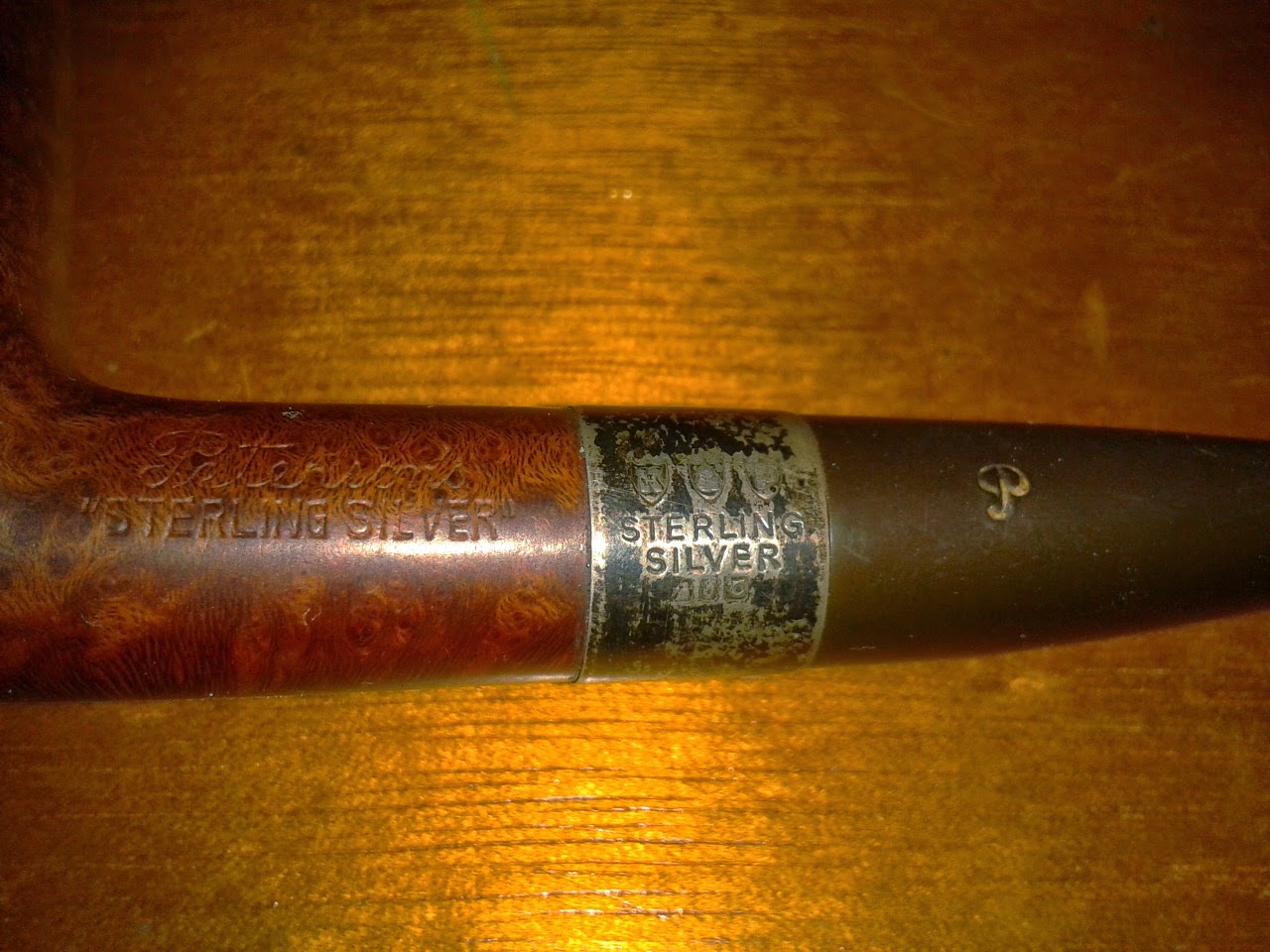Thursday, April 24, 2014
Wednesday, April 23, 2014
Monday, April 21, 2014
Sunday, April 20, 2014
Drawcard for puff daddies
I found this at the Sydney morning herald
James Cockington
August 27, 2008
In 1900 smoking was seen as a predominantly upper-class pursuit. Edward, Prince of Wales, was among the first public figures to champion the fad - after dinner, of course, in the drawing room.
By this time most tobacco - including more than 85 per cent in England - was sold in tins for pipe smoking. Gentlemen of distinction could order a personal blend to be kept in one's humidor at home.
It wasn't until World War I that packaged cigarettes began to outsell pipe tobacco. It was considered unpatriotic to smoke Turkish cigarettes, which led to the rise of Virginia tobacco. After the war, the more liberated women began to smoke. Miniature cigarettes, some tipped with rose or violet petals, were made especially for the fashionable female market.
This brief history, courtesy of the Benson and Hedges One Hundred Years booklet, seems almost fanciful today. Yet, against increasing public pressure, there are still those who enjoy a pipe even if they can no longer do it in public.
Prolific puffers have included Albert Einstein, who declared in 1950: "I believe that pipe smoking contributes to a somewhat calm and objective judgment in all human affairs." He was joined in this sentiment by, among others, the fictional Sherlock Holmes and the real-life Joseph Stalin.
Famous Australian pipe smokers have included poet C.J. Dennis, prime minister Ben Chifley (who drove trains and also smoked like one) and writers Henry Lawson and Frank Hardy, who - as a guest on the ABC game show Would You Believe? - dared to light up on national television. The eye doctor Fred Hollows was rarely seen without a pipe, even in the sterile environment of the hospital. Modern practitioners include Alexander Downer and Malcolm Fraser.
There's a small but dedicated network of pipe collectors, most of whom smoke what they collect. They claim the practice is therapeutic and relatively harmless, at least when compared with cigarette smoking. Pipe smokers do not inhale. Medical authorities may not agree that this reduces the health risk.
Pipes are still being made but tins of tobacco, once freely available in tobacconists and newsagents, are hard to find. Sol Levy still runs its famous establishment in Sydney but is one of the few survivors. Smokers are now just as likely to import their tobacco.
Pipe collectors and smokers can join clubs or online forums such as the Australian Pipe Smoking Forum. The Pipe Club of London is a famous global group, although even it is having difficulty finding a location for meetings.
After a quick clean, most vintage pipes are still suitable for use. Smokers claim good pipes mature with age after a breaking-in period. To own a pipe and not try it at least once is like owning and not playing a musical instrument.
Collectors tend to have a range of pipes (about 100 is considered normal) plus assorted paraphernalia such as stands, tobacco tins, humidors and ashtrays. Most like to devote a room in the house to smoking and reserve a favourite armchair or couch.
Among the most valuable pipes are older examples of the German Meerschaum style, made from a sepiolite clay found in Turkey. These changed colour from white to brown with use. Old examples have an amber mouthpiece. Later ones replaced this with horn, then bakelite. A good early example in the original case is worth about $500.
Also desirable are the elegantly curved calabash pipes, made from an African gourd. Some people collect only these and there's a book on this subject - The History Of The Calabash Pipe, by Gary Schrier.
This style is often associated with Sherlock Holmes, although the first illustrations of the character show Holmes puffing on a standard straight-column pipe. One theory is that the actor Basil Rathbone, who played Holmes, popularised the calabash by smoking them in his movies.
All types of pipes are still easy to find. Bob Kerr (see My Collection) says tobacco shops changing hands are usually good sources. The new owners are usually glad to get rid of them. Kerr picked up 13 from a shop in Liverpool for $70.
Some older pipes turn up in antique shops, often in groups of four or five in a rack. Their value is usually arbitrary unless they are made by Dunhill, which means they are double the price asked for lesser known brands (although some collectors say Dunhill is overrated).
And it's not only old pipes that are valuable. Bill Ashton-Taylor, a former quality control manager for Dunhill, started making his own series of Ashton Pipes in 1983. He carves them by hand, gives them appropriate names such as the Oldchurch Billiard Taper and cures them with a special oil, so they do not need breaking in.
Devout smokers consider it essential to own at least one original Ashton pipe.
My collection
A former technician with what was then the Postmaster-General (now Australia Post), Bob Kerr started smoking pipes exclusively when he gave up cigarettes at the age of 40.
He remembers that this was 1978 when a pack of fags had reached the prohibitive price of $1.
He found he enjoyed the pipe experience. "You've got to devote yourself to a pipe," he explains.
Being an avid collector (he's previously featured on this page because of his passion for retro caravans and will probably appear again as a fan of Arthur Upfield), he started keeping any old pipes he found. Among his favourites are ones handed down by his father and grandfather. Smoking can be an emotional experience.
"The sense of smell has got a pretty good memory," he says. "Pipe smoke reminds me of the barber shop I went to as a kid in [the Sydney suburb of] Auburn."
Kerr happily accepts the ban on smoking in trains, cinemas, restaurants and other public places but he sees no reason why pipe smoking shouldn't be allowed in premises owned by private individuals.
Saturday, April 19, 2014
Polished Peterson
 |
| The silver band weighs .9g. That's about 60c worth of silver . |
 |
| I love the lava grain. |
Friday, April 18, 2014
The World´s Largest Pipe
 |
| From Erik Nording,s web site. |
The history of the world´s largest pipe,
included in the Guinness Book of Records 1988: Erik Nording got the idea for the world´s largest pipe several years ago. But because briar wood, from which most pipes are made, only grows as a single root from a bush, it was impossible to produce a really large pipe made of genuine briar by means of the traditional methods.
Thus, the largest pipe in wood made from genuine briar was formed out of 1.189 individual pipe bowls, collected single-handedly by Erik Nording throughout several years.
Naturally, it is possible to smoke the pipe as well, as one of the pipe bowls is connected to the mouthpiece, which has been formed out of 1.005 ordinary mouthpieces.
The result is a pipe which is 83.4 inches tall and weighs 125 pounds. The diameter of the bowl is 25 inches and the height is 29.2 inches. The mouthpiece is 45.8 inches long.
The entire project is handmade and Erik Nording put 103 hours of work into developing this pipe. If one were to work out the retail price, it would amount to approximately 50.000 U.S. Dollars.
New old Peterson pipe
Subscribe to:
Posts (Atom)




















.jpg)

























